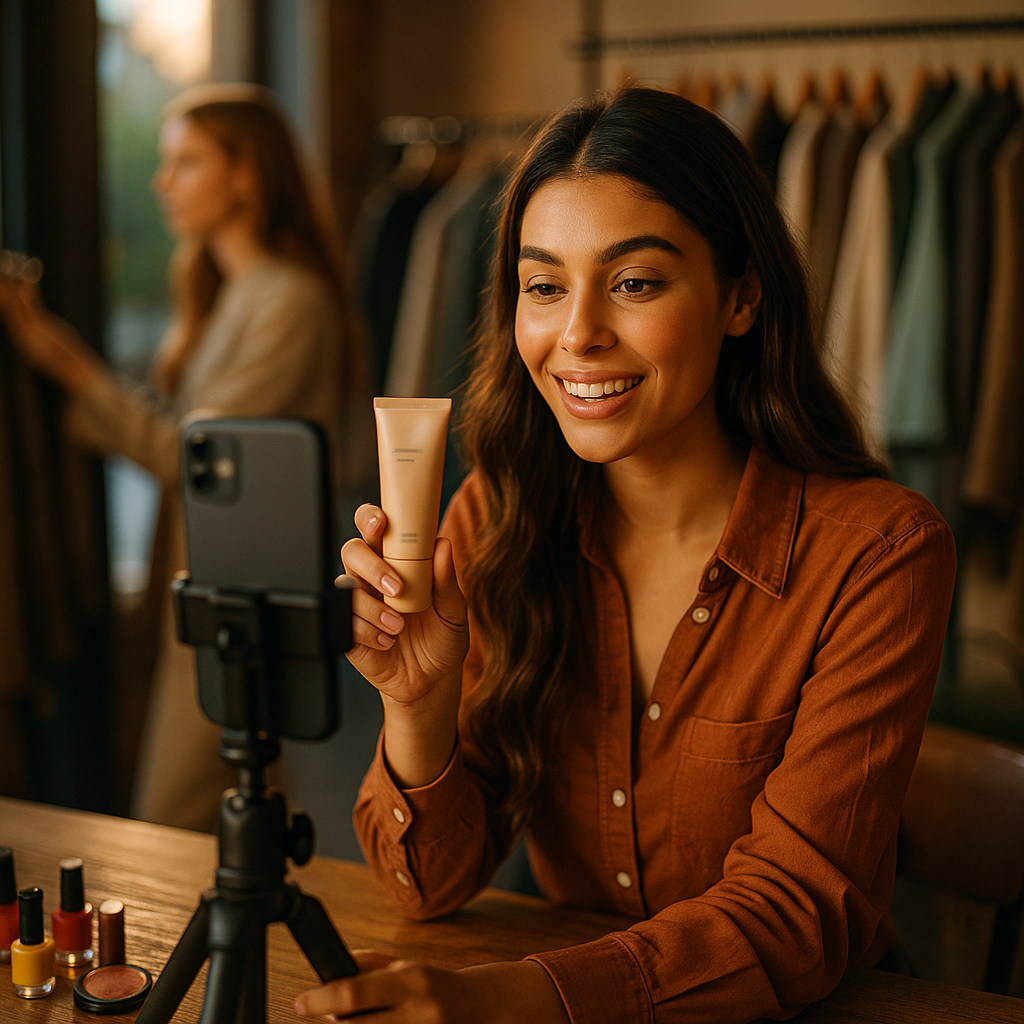In today’s fast-paced digital landscape, influencer marketing campaigns have become vital for brands looking to break through highly competitive markets. This case study demonstrates how a leading brand achieved remarkable results through expert collaboration and data-driven strategies. Discover the powerful tactics that propelled them ahead—and how your brand can emulate their success.
Understanding the Challenges of a Competitive Influencer Market
Highly competitive markets, such as skincare, fitness wear, and eco-friendly products, present unique influencer marketing challenges. Saturation leads to audience fatigue, frequent algorithm changes, and increased skepticism among consumers. Brands must adopt innovative approaches to influencer campaign success, focusing on trust, authenticity, and differentiation. The bar for engagement is high, requiring careful audience research and strategic partnership choices. In this landscape, only meticulously planned campaigns rise above the noise.
Setting the Stage: Goals, Audience, and Influencer Selection
For a campaign to succeed in a crowded field, clear goals and precise audience targeting are critical. This case study spotlights a consumer wellness brand launching a new plant-based supplement line in 2025—one of the most saturated segments online.
- Goals: Increase brand awareness, generate high-converting leads, and foster strong community engagement.
- Audience: Young professionals aged 25-40 interested in health, convenience, and transparency.
- Influencer Selection: The brand partnered with micro-influencers (5,000–50,000 followers) who demonstrated expertise in wellness and showed genuine advocacy, ensuring trust and relevance.
Influencer vetting used engagement rate data and authenticity verification tools, minimizing the risk of fake followers or ineffective collaboration. By focusing on micro-influencers, the brand tapped into tight-knit communities where recommendations carry real weight.
Building Trust and Authenticity in Influencer Content
In 2025, trust is the foundation of any effective influencer marketing campaign. This brand prioritized authenticity in campaigns by:
- Encouraging creators to produce content in their unfiltered, signature style—no scripted messaging.
- Allowing influencers to share their personal wellness journeys and product experiences over a four-week period rather than one-off posts.
- Highlighting transparency by sharing product sourcing and third-party lab results through influencer stories and reels.
This approach resulted in content that felt relatable and believable. Each influencer had the freedom to explain how the supplement solved real challenges, which reinforced trust for their audience. Authenticity extended to comment section interactions—creators answered questions and addressed concerns, fostering two-way engagement.
Leveraging Multi-Platform Strategies for Maximum Impact
Diversifying content distribution is vital for influencer marketing in saturated markets. The brand employed an integrated, multi-platform influencer strategy including:
- Instagram: Lifestyle posts, Reels, and Stories for daily engagement and product demonstrations.
- TikTok: Micro-videos with wellness tips, “day in the life” uses, and ingredient breakdowns, riding the wave of health trends and informative entertainment.
- YouTube: Long-form testimonials and Q&As to provide in-depth education and build evergreen SEO traffic.
Each platform had a tailored creative brief but maintained cohesive brand messaging. Short-form content drove discovery and interaction, while long-form video built trust and answered complex questions that short posts could not. Campaign UTM links in bios and “link in story” features ensured results were trackable back to platform and influencer source, optimizing return on investment.
Data Measurement and Optimization for Campaign Success
In 2025, access to real-time analytics enables continuous improvement of influencer-led campaigns. This brand built an optimized influencer marketing strategy using:
- Performance Benchmarks: Initial influencer selections were based on an engagement rate above 4.5%, and follower authenticity was checked using AI-powered tools.
- Weekly Metrics: Key metrics included reach, saves, shares, click-through rates, and code redemptions for exclusive offers.
- A/B Testing: Caption styles, video lengths, and call-to-action placements were tested weekly, quickly identifying what resonated most with the audience.
The iterative process led to mid-campaign pivots—for example, shifting spend toward creators who sparked higher comment engagement. By campaign’s end, the brand saw a 136% increase in qualified website traffic, a 42% rise in social community membership, and a 91% positive sentiment ratio in campaign mentions. Importantly, tracked conversions from creator-linked codes outperformed industry averages by 63%.
Key Takeaways and Replicating This Influencer Campaign Model
This influencer marketing campaign case study illustrates how targeted planning, authentic storytelling, and data-driven adaptation conquer even the most crowded markets. Brands should:
- Define campaign objectives and select influencers with authentic engagement.
- Empower creators to craft relatable, trust-based content in their voice.
- Diversify tactics across platforms for comprehensive reach.
- Employ rigorous measurement and optimization to drive results and ROI.
Success in influencer marketing now demands a holistic, technology-enhanced approach, ensuring every touchpoint builds lasting customer relationships—not just fleeting visibility.
FAQs: Successful Influencer Marketing Campaigns in Competitive Markets
-
Q: What’s the most important factor when choosing influencers for a crowded market?
A: Alignment with your brand values and authentic audience engagement matter most. Data shows micro-influencers with real two-way conversations have higher conversion rates than celebrities in competitive niches. -
Q: How long should an influencer marketing campaign run for optimal results?
A: Sustained campaigns (minimum 4-6 weeks) outperform one-off sponsored posts. Extended exposure allows audiences to see real impact, ask questions, and act on recommendations over time. -
Q: What are the best metrics to track influencer campaign success in 2025?
A: Go beyond views—track engagement rate, click-through rate, comment quality, unique code redemptions, and community growth. AI-driven tools provide deep audience insights for continual campaign optimization. -
Q: Should brands invest in nano, micro, or macro influencers in saturated spaces?
A: Micro-influencers (5,000–50,000 followers) deliver higher authenticity and conversion in competitive markets, while macro influencers may build awareness but at a higher cost per acquisition.
Influencer marketing campaigns remain essential for breakthrough in highly competitive markets. By focusing on authentic creator partnerships, clear metrics, and data-driven optimization, brands can achieve powerful, sustainable growth and loyal communities in 2025 and beyond.
